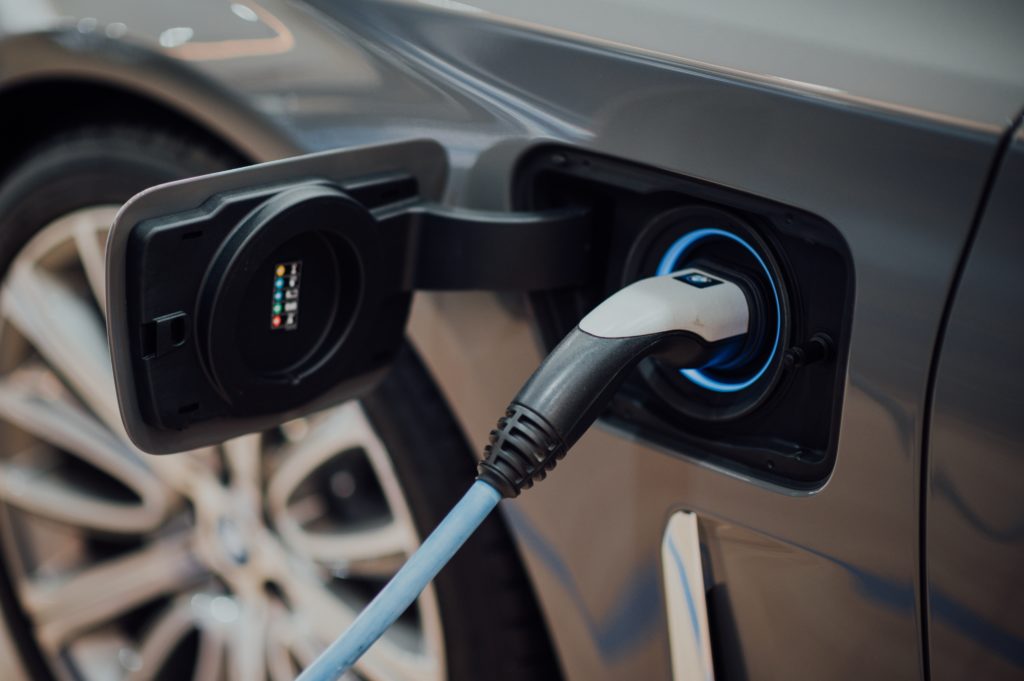Lithium-ion batteries were originally developed in the 1990s. They carry much more charge per pound of weight than an equivalent lead-acid battery of the same weight that powers the electronic components in your gas engine car. This means they can be lighter while giving the car more range. In an electric car, the battery is the most expensive component part.
In this article, we will look at the basics of the lithium-ion car battery and what you need to know when it comes to a Tesla repair.
What is a lithium ion battery?
It’s natural for an EV enthusiast to ask, “How do lithium-ion batteries work?” Here are the basics.
All batteries come in three essential parts:
- The anode stores the charged electrons (ions)
- The electrolyte allows the ions to travel to the cathode. When they travel they create a current to power your car
- The cathode receives the ions
With a Tesla lithium-ion battery these parts are made of:
- A graphite anode
- A lithium electrolyte
- A cathode made of nickel, lithium, cobalt, aluminium and oxygen
Lithium-ion battery materials are designed for specific purposes. The graphite in the anode, for example, is the best storage medium currently used for lithium ions. The cobalt in Tesla’s cathodes prevents the cell from catching fire if stressed.
Proprietary composition achieves a number of goals. The first goal is to hold as much of a charge as possible for a given weight. A Tesla battery must be able to take a high current from a Tesla Supercharger without catching fire. It must also be low-cost to manufacture to make the car competitive in price with gas-powered cars.
How is a lithium ion battery charged?
Lithium-ion battery charging on an electrical vehicle is not terribly different from the charging process for your other electronic devices.
When you plug the car into a charger, the vehicle’s computer system analyzes the current to decide what is safe to put into the battery and for how long. The vehicle then receives the current, moving the lithium ions from the cathode to the anode. The chemical makeup of the battery allows a bigger current to go in without reactions taking place inside that could lead to a short circuit or fire.
High currents may cause irreversible changes over time. Some Tesla owners report that their range dropped slightly over time with regular supercharger use.
How are lithium ion batteries made?
To keep costs down, Tesla’s car batteries are made at high speed by robots. Watch this 52-second video to see just how quickly this is done!
After the cells are made they are put into modules and the modules in cases. The case is then put into the bottom of the car.
As we discussed above, one of the core aims in the battery design is to keep manufacturing costs down while creating a safe battery with a big range per given weight. The design makes this possible, and newer Teslas have a still longer range and lower manufacturing costs.
Tesla right to repair
Tesla batteries are stored on the floor of the car. The casing and modules are locked in place using special tools and equipment. This is why it is best to use a Tesla Authorized Repair Shop to service your Tesla. A Tesla Repair Shop has technicians who are specially trained, using tools provided by Tesla, to replace and repair a Tesla lithium-ion battery.
The battery remains the most expensive part of the vehicle. Removing and replacing a Tesla module or battery can take as little as a few hours, depending on what has happened. If you have been in a collision and the bottom of the car has been damaged, then your repair could be more complex.
Tesla repair and the lithium ion battery
Most owners never have to repair a Tesla car battery. You should contact us to discuss repair or replacement if:
- Your car has been in a collision
- Tesla has sent you an over the air notification that the battery has failed
- The battery doesn’t hold any charge when you plug the car in
- Your range has dropped 20% or more over a short period of time
If any of these apply to you, call us at (760) 433-5050.
Lithium ion battery recycling and disposal
When a lithium-ion battery is removed for disposal, it is sent for recycling. Lithium-ion batteries should never be placed in the garbage for two reasons. Firstly, some components are critical minerals that are in short supply and not easily substituted. Two, if the casing is damaged, the battery can present a fire hazard. When a battery cannot be salvaged, the nickel, cobalt, lithium, and even casing can be reused in other batteries. Therefore, lithium-ion battery disposal should be handled by an authorized battery recycling facility.
The million mile battery?
Currently, a Tesla lithium-ion battery is designed to last 300,000 – 500,000 miles, and Elon Musk has stated that his goal is to make Tesla car batteries capable of lasting a million miles. With the technology and research money being poured into battery technology, we think Musk will reach his goal within just a few years.
Tesla repair shop
Life on the road is unpredictable and people don’t always drive perfectly – there will always be a need for Tesla collision repair! Where should you repair a Tesla? At a Tesla authorized facility! Contact us to discuss your needs on (760) 433-5050.
Written by: Richard Shrubb




